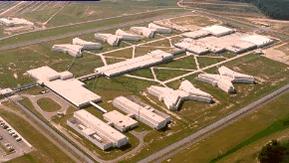
The Bloods are a primarily African-American street gang founded in Los Angeles, California. The gang is widely known for its rivalry with the Crips. It is identified by the red color worn by its members and by particular gang symbols, including distinctive hand signs.
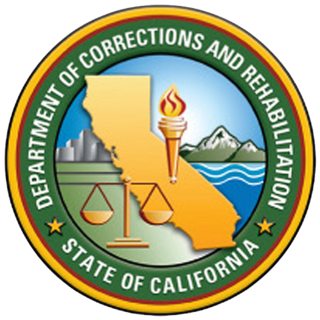
Pelican Bay State Prison (PBSP) is a supermax prison facility in Crescent City, California. The 275-acre (111 ha) prison takes its name from a shallow bay on the Pacific coast, about 2 mi (3.2 km) to the west.

The Mexican Mafia, also known as La eMe, is a Mexican American criminal organization in the United States. Despite its name, the Mexican Mafia did not originate in Mexico, and is entirely a U.S. criminal prison organization. Law enforcement officials report that the Mexican Mafia is the deadliest and most powerful gang within the California prison system.
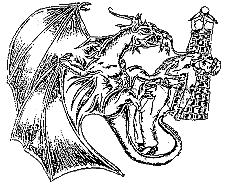
The Black Guerrilla Family is an African American black power prison gang, street gang, and political organization founded in 1966 by George Jackson, George "Big Jake" Lewis, and W.L. Nolen while they were incarcerated at San Quentin State Prison in Marin County, California.

The United States Penitentiary, Administrative Maximum Facility, commonly known as ADX Florence or the Florence Supermax, is an American federal prison in Fremont County to the south of Florence, Colorado, operated by the Federal Bureau of Prisons, a division of the United States Department of Justice. ADX Florence, constructed in 1994 and opened one year later, is classed as a supermax or "control unit" prison, that provides a higher, more controlled level of custody than a regular maximum security prison. ADX Florence forms part of the Federal Correctional Complex, Florence, which is situated on 49 acres of land and houses different facilities with varying degrees of security, including the adjacent United States Penitentiary, Florence High.
A prison gang is an inmate organization that operates within a prison system. It has a corporate entity and exists into perpetuity. Its membership is restrictive, mutually exclusive, and often requires a lifetime commitment. Prison officials and others in law enforcement use the euphemism "security threat group". The purpose of this name is to remove any recognition or publicity that the term "gang" would connote when referring to people who have an interest in undermining the system.
The NETA Association is the name of a gang that began in the Puerto Rico prison system and spread to the United States mainland. Although Puerto Rico has many small street gangs claiming its poorer neighborhoods, NETAS is by far the largest and most dominant, controlling the illegal drug trade in the island's prison system.

A super-maximum security (supermax) or administrative maximum (ADX) prison is a "control-unit" prison, or a unit within prisons, which represents the most secure level of custody in the prison systems of certain countries.

Larry Hoover is an American former mobster and gang kingpin. He is the founder of the Chicago street gang, the Gangster Disciples.

The Crips are an alliance of street gangs that is based in the coastal regions of Southern California. Founded in Los Angeles, California, in 1969, mainly by Raymond Washington and Stanley Williams, the Crips began as an alliance between two autonomous gangs, and developed into a loosely connected network of individual "sets", often engaged in open warfare with one another. Its members have traditionally worn blue clothing since around 1973.
Pontiac Correctional Center, established in June 1871, is an Illinois Department of Corrections maximum security prison for adult males in Pontiac, Illinois. The prison also has a medium security unit that houses medium to minimum security inmates and is classified as Level 3. Until the 2011 abolition of the death penalty in Illinois, the prison housed male death row inmates, but had no execution chamber. Inmates were executed at the Tamms Correctional Center. Although the capacity of the prison is 2172, it has an average daily population of approximately 2000 inmates.

Stateville Correctional Center (SCC) is a maximum security state prison for men in Crest Hill, Illinois, United States, near Chicago. It is a part of the Illinois Department of Corrections.

Deuel Vocational Institution (DVI) was a state prison located in unincorporated San Joaquin County, California, near Tracy. The prison closed on September 30, 2021.
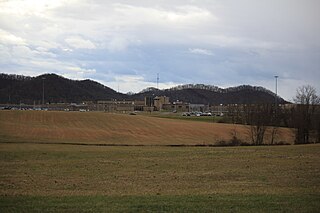
The Southern Ohio Correctional Facility is a maximum security prison located just outside Lucasville in Scioto County, Ohio. The prison was constructed in 1972. As of 2022, the warden is Donald Redwood.

Menard Correctional Center, known prior to 1970 as Southern Illinois Penitentiary, is an Illinois state prison located in the town of Chester in Randolph County, Illinois. It houses maximum-security and high-medium-security adult males. The average daily population as of 2007 was 3,410.
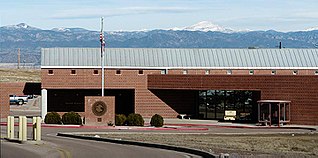
The United States Penitentiary, Florence High is a high-security United States federal prison for male inmates in Colorado. It is operated by the Federal Bureau of Prisons, a division of the United States Department of Justice. USP Florence High is part of the Federal Correctional Complex, Florence, which is situated on 49 acres (20 ha) of land and houses different facilities with varying degrees of security. It is named "Florence High" in order to differentiate it from the United States Penitentiary, Florence ADMAX, the federal supermax prison located in the same complex.
In the late 19th and early 20th centuries, African American organized crime emerged following the first and second large-scale migration of African Americans from the Southern United States to major cities of the Northeast, Midwest, and later the West Coast. In many of these newly established communities and neighborhoods, criminal activities such as illegal gambling, speakeasies and were seen in the post-World War I and Prohibition eras. Although the majority of these businesses in African American neighborhoods were operated by African Americans, it is often unclear the extent to which these operations were run independently of the larger criminal organizations of the time.
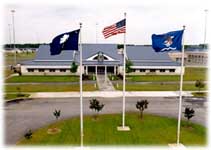
The Federal Correctional Institution, Estill is a medium-security United States federal prison for male inmates in South Carolina. It is operated by the Federal Bureau of Prisons, a division of the United States Department of Justice. It also has an adjacent satellite camp for minimum-security male offenders.
A prison gang is an inmate organization that operates within a prison system, that has a corporate entity, exists into perpetuity, and whose membership is restrictive, mutually exclusive, and often requires a lifetime commitment. Political scientist David Skarbekargues the emergence of prison gangs are due to the dramatic increase in the prison population and inmate's demand for safety. Skarbek observes that in a small, homogeneous environment, people can use social norms to interpret what behavior is acceptable, but a large, heterogeneous setting undermines social norms and acceptable behavior is more difficult to determine. Prison gangs are geographically and racially divided, and about 70% of prison gang members are in California and Texas. Skarbek suggests prison gangs function similar to a community responsibility system. Interactions between strangers are facilitated because you do not have to know an individual's reputation, only a gang's reputation. Some prison gangs are transplanted from the street. In some circumstances, prison gangs "outgrow" the internal world of life inside the penitentiary, and go on to engage in criminal activities on the outside. Gang umbrella organizations like the Folk Nation and People Nation have originated in prisons.
Wilkinson County Correctional Center (WCCC) is a private prison in unincorporated Wilkinson County, Mississippi, managed since July 2013 by Management and Training Corporation (MTC) on a five-year contract with the Mississippi Department of Corrections.
